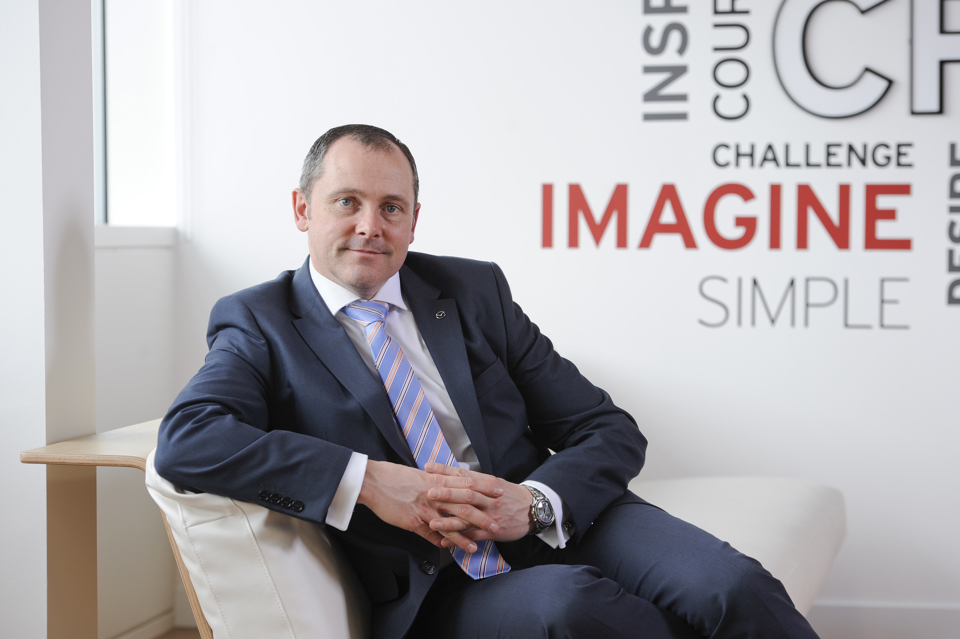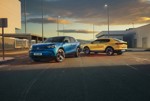Mazda is never going to be challenging for fleet bragging rights: retail accounts for more than half its annual registrations, a far greater proportion than most competitors.
However, core fleet (true fleet plus Motability) has carved out a share that brings a vital contribution to the manufacturer’s success in the UK. At 28% of the year-to-date sales total of 24,493 – split 4,389 true fleet and 2,482 Motability - core fleet currently sits at the upper end of the manufacturer’s 20-30% target bracket for the UK.
It’s a target that head of fleet Steve Tomlinson has consistently achieved over his 12 years in the role – no mean feat considering Mazda’s shortage of full electric models.
Driving the performance is the CX-5 and Mazda 2, both with four-figure registrations in true fleet this year, although the CX-60 is most reliant on the true fleet sector, which accounts for 44% of its 2,071 sales to date. It is one of the best-selling plug-in hybrids in the sector.
Interestingly – and bucking an industry trend – the MX-30, currently Mazda’s only fully electric car in the UK, is strongest in the retail market which accounts for 48% of volumes; in contrast fleet takes just 23%.
The more affordable model, which starts at £31,000 thanks to a smaller, cheaper battery, shows that electric vehicles will appeal to private buyers if the price is right, although some of those registrations will also be for the range extender version with its small rotary engine.
Nevertheless, the limited 124-mile range of the BEV is not proving a detraction for the right type of buyer, which plays into Mazda’s global “right-sizing” philosophy which means offering the “right vehicle with the right engine” for the right buyer.
With an industry still recovering from the post Covid blues with production shutdowns and components shortages affecting supply, Mazda has bounced back quicker than most, according to Tomlinson.
“At the end of 2023 compared to 2018, the market was still half a million sales lower, with fleet at 85% of 2018 levels and retail at 75%,” he said. “But we are up to 94% of our 2018 volumes in fleet; we have bounced back better than the industry”.
Motability has been a particular success story. The market channel is up 31% year-on-year, although Mazda has held its volumes level with 2023.
“When times are hard, Motability volumes surge because it’s the cheapest way to run a car if you are entitled to the allowance,” Tomlinson said.
“But manufacturers don’t force the market; it’s demand led.”
Despite being a trailblazer in some areas – note Mazda’s rotary engines and SkyActiv technology which claims petrol power with diesel efficiency – the company is lagging behind most rivals when it comes to electrifying its car range.
However, this comes back to that ‘right vehicle, right engine’ approach which sees Mazda continuing to invest heavily in petrol technology.
“We want to bring to market products that people want, not ones that they are compromised into choosing,” said Tomlinson. “Our range will all be part of a multi-solutions strategy to meet the needs of the global consumer, not just the UK, which is why we are still developing ICE as well as electric.”
Mazda PR director Graeme Fudge added: “If we don’t continue to develop ICE, the CO2 numbers won’t go down as fast from a global perspective. We are also doing a lot of work on synthetic fuels, but we aren’t restricting ourselves to what a powertrain should be.”
Nevertheless, Mazda does have a clear roadmap for its electrification strategy which will see products from its Skyactiv Scalable EV Architecture introduced to global markets from next year until 2030, although exact details of which model and which market are yet to be confirmed.
By 2030, between 25-40% of Mazda’s models will be full electric, with the UK expected to be at the higher end of that scale. But every model on sale will have an electrified option, whether full electric, PHEV or hybrid.
“The trajectory is towards electric, and we are making considerable investment,” said Fudge.
Responding to the ZEV Mandate targets, he added: “There is lots of flexibility within the ZEV Mandate that, with our future electric car plans, means we can remain penalty free.”
The next model on the electrification plan is the full-size SUV CX-80 PHEV, offered with six- and seven-seat options, which will be in the UK early 2025. Predicted by Tomlinson to have lots of appeal in the fleet sector, he is also exploring the possibility of introducing a lower specced entry version of the mid-size CX-60 to enable the car to be positioned on lower company grades, widening its appeal.
“While as a brand we have always been more retail-focused, there is more focus on fleet because of the recovery in the UK,” Tomlinson said. “This includes P11D pricing for company car bands because our models have tended to be at the mid to higher end of grades.”
With a model range encompassing Mazda 2, Mazda 3, CX-30, CX-5, CX-60, CX-80, MX-30 and MX-5, the company covers around 60% of the car sector but acknowledges gaps in the range. Some are likely to be filled in the coming years.
Its fleet focus for the next 12 months is based on four channels: corporate, SMEs, Motability and rental, albeit taking a managed approach to the latter. The customer base is growing – the CX-60 acted as a catalyst – with some fleets returning and new business also won.
Alongside the new car strategy is a spotlight on used cars and residual values. Mazda has a dedicated used car team which manages the whole cycle, underpinned by a PCP product for used cars.
A national contract hire and residual value manager ensures RVs are closely monitored, supported by Mazda’s newly appointed captive contract hire partner.
“When the (residual values) market fell, we fell too but we have bounced back more quickly,” said Tomlinson. “We review quarterly and are seeing values stabilising.”
He anticipates 2025 new registrations to be similar to this year, but notes that average contracts are lengthening, and extensions remain widespread.
“Companies are seeing the value of retaining good condition, lower mileage cars rather than going onto new contracts,” he said.
“We also see BEVs increasing next year with some larger fleets’ policies changing to be BEV only or BEV and PHEV so this will drive growth.
“We will maintain our focus on fleets that we have relationships with.”





















Login to comment
Comments
No comments have been made yet.